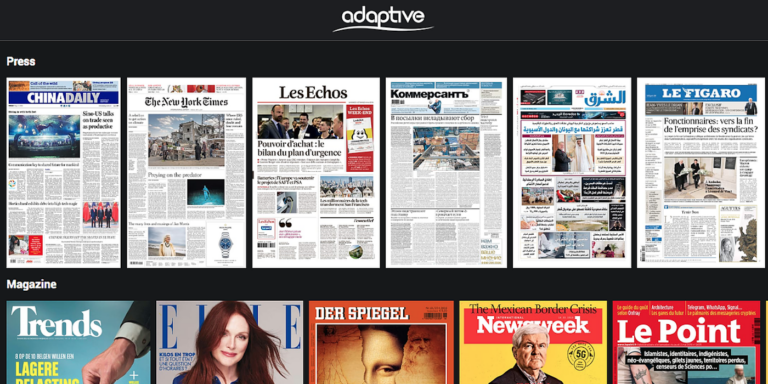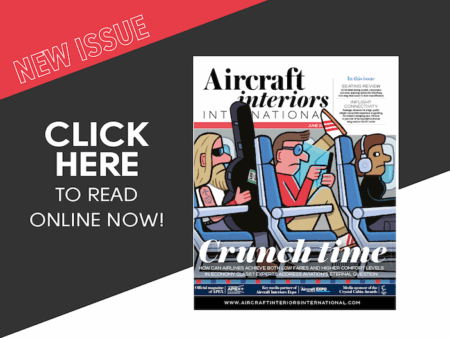2020 has not been – and will, most likely, not be – the year that any of us expected. Of course, I’m referring to the Covid-19 pandemic that has effectively shut down all aspects of the travel industry, with the aviation industry being particularly hard hit.
Although the CARES Act in the USA (and other international governmental aid packages) offers airlines a lifeline in these financially challenging times, no airline will come out of this unaffected – but some will be facing a much better financial outlook, post-coronavirus, than others.
So what are the factors that will decide which airlines are most successful, post-virus? This question can be answered in one word: innovation.
Now is the time for airlines to establish their post-coronavirus operational strategy so they will be ready when the demand returns. Airlines must dig deep and truly think outside of the box when it comes to how they will fulfill passengers’ needs, while cutting costs and boosting revenue.
New priorities
The current crisis will accelerate all digital transformations that are already underway. Like the travel industry, Covid-19 has caused significant changes to the retail industry; specifically, the need for online shopping as a replacement to bricks-and-mortar stores, because of consumers’ increased vigilance about potential contagions and also the shut-down of non-essential businesses by many governments.
Although it’s impossible for us to travel digitally (until Captain Kirk makes that possible!), the aviation industry can learn quite a bit from the way the switch to digital happened in the retail industry, almost overnight.
As in the retail industry, post-coronavirus travellers will expect a very different travel journey and inflight experience. Health and safety will be front-of-mind for passengers, and they will be looking to airlines to implement strategies to protect them from potential contagions that they may encounter while travelling; as such, inflight amenities and services will need to be considered and updated to address passengers’ health-related concerns.
It’s common knowledge that an airline cabin can contain many different contagions. While most passengers assume the bathroom and seats would have the most germs, tests have shown that many surprising places – like the seat pocket, seatbelt, tray table and fan nozzle – actually have a great deal more bacteria, perhaps because the obviously dirtier places are cleaned/sanitised more regularly by crew.
A Canadian study showed that “Seat pockets are extremely dirty, with a high aerobic count, mould, coliforms, and E.coli found on various samples.”
If that’s not enough, a study by Auburn University in Alabama showed that “MRSA germs could survive for up to 7 days on seat pocket cloth.” Another study found that, “cold and influenza viruses can survive for hours on fabric and tissues, and even longer (up to 48 hours) on non-porous surfaces like plastic and metal,” making the seat pocket – and the glossy inflight magazine that comes out of it, a potential health liability.
So how can airlines provide for their germ-conscious passengers in a post-coronavirus world?
First, it’s important to put yourself in your germ-conscious passengers’ shoes; you’ll quickly see that the cabin and seats could be perceived by passengers as a possible cesspool of germs – and airlines must act today to ensure they are ready to greet these passengers – with their new needs and wants – when the industry picks up again.
Passengers will want some pretty big changes: of course, more regular disinfection must be a priority post-virus – including the seat, seatbelt, tray table and seatback pocket – even during short turnarounds. Another very important way to significantly decrease passengers’ exposure to contagions is to eliminate hard copy inflight magazines, and instead share the same content via digital magazines. The switch from hard-copy newspapers to digital newspapers, readable on the same device as digital magazines, is another way to offer passengers the press content that they want, both inflight and in the lounge, from the safety of their own device (via the airline’s mobile app or a web portal in lounges).
A recent Future Travel Experience article agreed: “… passengers may be more wary of touching inflight entertainment (IFE) screens and may turn to their own devices en masse. There could be an opportunity here for airlines, or more specifically airline apps. Airlines may have more success in convincing passengers to use their apps if it adds value at every touchpoint – from checking in and navigating through the terminal, to controlling IFE and even interacting with cabin crew – creating a real opportunity for them to promote relevant ancillary services through their mobile apps to an almost captive audience.”
If you’re still not convinced about the value of digital press content in a post-coronavirus world, here are some other key benefits to this innovative strategy:
Boost ancillary revenue
Digital press content gives airlines incredible insight into passengers’ interests, needs and wants. The content-rich nature of newspapers and magazines gives airlines the opportunity to mine data that will improve their ability to deliver targeted and compelling ads more effectively to the right passenger, at the right time – drastically improving an airline’s travel retail conversion rates, by leveraging up-selling and cross-selling opportunities.
Cut costs
Eliminating hard copy press is also a great way to cut airlines’ operational costs. By eliminating the extra weight that hard copy newspapers and magazines add to each flight, airlines will experience a significant cost reduction on fuel. “According to research from Boeing, removing the weight of print newspapers and magazines equates to an annual savings of over US$4.5 million for a fleet of wide-body aircraft operating 1,000 flights per day,” said APEX.
Offering digital press also eliminates the logistical costs associated with providing hard copy newspapers and magazines, giving airlines another way to decrease their operating costs during this very difficult time.
Save the environment, one flight at a time
Today’s passengers are also very environmentally conscious, giving those airlines which prioritise improving their overall environmental impact a significant financial advantage in terms of appealing to travellers. By eliminating paper waste from hard copy newspapers and magazines on board (and the weight associated with them), airlines use less fuel on each flight, decreasing the airline’s overall carbon dioxide (CO2) emissions and improving their carbon footprint – and, as a result, making their airline much more attractive to potential guests.
It’s a brand new (digital) world
As you can see, the change from hard copy inflight magazines and newspapers to digital press can improve the PaxEx and NPS, create new ancillary revenue opportunities, offer valuable ways to cut logistical and operational costs, give airlines a financial advantage over competitors who aren’t prioritising improving their environmental impact and, most importantly, it will help reassure health-conscious travellers of their safety during their flight.
Airlines worldwide have already started implementing the switch to digital press inflight because they recognise their passengers’ general discomfort with touching anything they don’t know is completely clean and sanitised; we expect to see many more forward-thinking airlines adopting digital press, through their IFE solutions, in the coming weeks and months – after all, it will be an operational imperative for all airlines worldwide during the very… slow… coronavirus-impacted travel market – and beyond.
About the author
Laurent Safar is CEO of Adaptive, an IFE and digital press content service provider (CSP) for the global aviation industry. Current airline clients include Singapore Airlines, SAS, and TAP Portugal among others. Adaptive’s mobile IFE technology is also used in airport lounges across Europe and by other transportation providers around the world. Headquartered in Toulouse, France, more information can be found at adaptive-channel.com.





